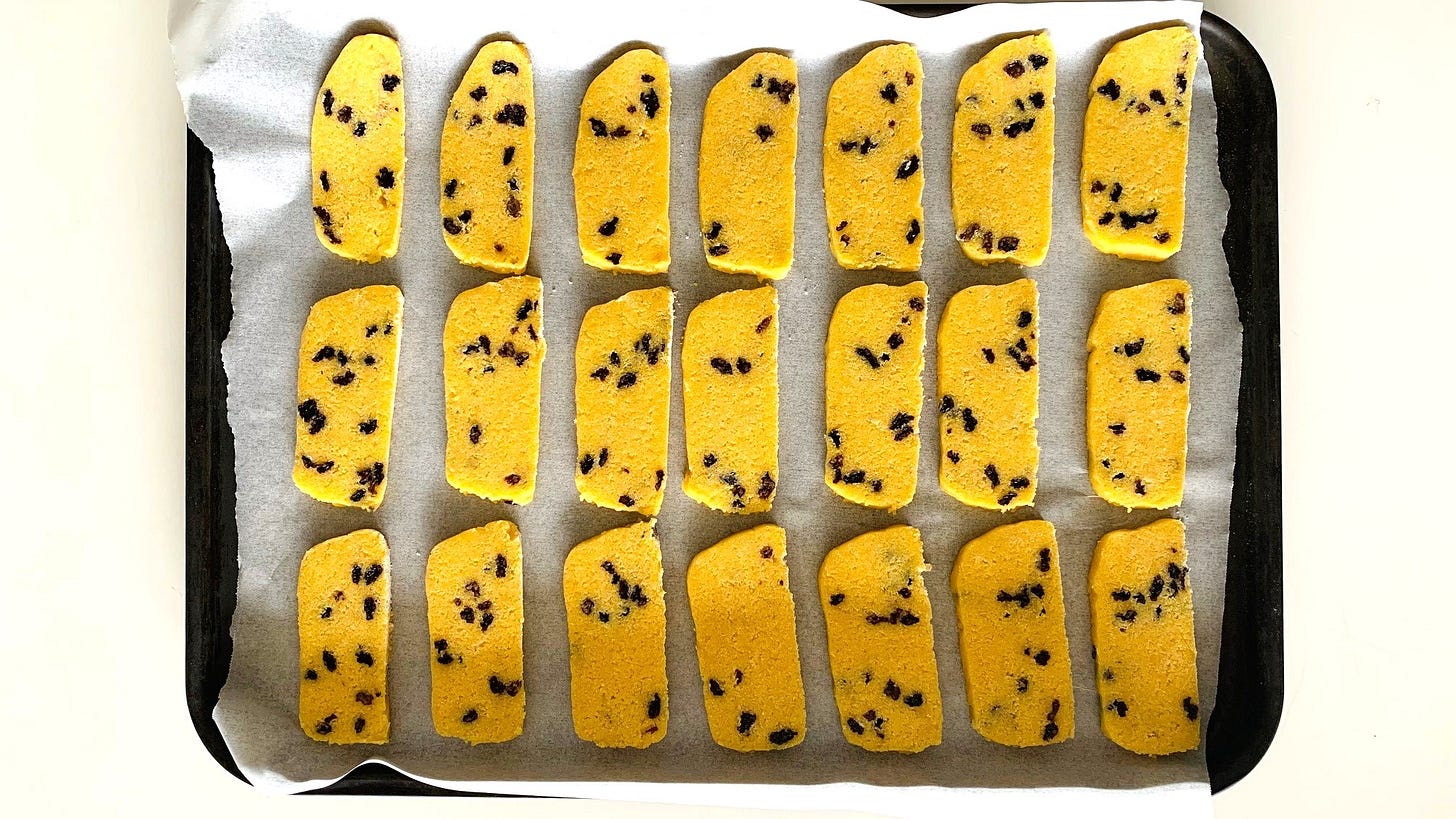IT'S POLENTA, BUT IT'S A BISCUIT.
There’s joy to be had in getting obsessed with something in the kitchen. Like polenta. Again, Jill? Yes, but this time it's a biscuit.
The world makes out that obsession is unhealthy. But being an obsessive character can be a wonderful thing. As a cook or as an eater, it means something gets stuck in your mind; you keep thinking about it. Everything else is framed by it, everything else gets put through the filter of it.
You cook it in different ways, you dream about it. You have a success with it, and a failure. You learn. Then just when you are starting to drive everyone around you bonkers, you move on.
Cure for an obsession: get another one (Mason Cooley).
In this way, your life will be filled with wondrous discoveries, heightened focus, random inspiration, and seriously delicious things.
Like these polenta biscuits.
Still on my polenta kick, I have moved on from last week’s polenta puddles to this week’s biscuits, because the thing that I love about polenta is its gritty graininess, and the thing I love about little Italian biscuits is that they’re not too sweet.
And the thing I love about having big shelves of cook books grouped in order of cuisine is that I can go “Carol Field! I need Carol Field!” and go directly to the Italian section, reach out my hand and pull out The Italian Baker. Which is exactly what my father used to do with wine - walk into his cellar in the dark and reach out for the exact bottle of wine he was after.
Written in 1985 after Carol spent two years travelling around the cities and hilltop towns of Italy studying regional breads, pizze, cakes and pastries, The Italian Baker is the benchmark book for all those obsessed with the taste of Italy. (And a revised 2011 edition is available here. If you think that might be out of date, I’m sorry, but we are talking about timeless, traditional recipes. A use-by date does not apply).
I knew that if there were such a thing as polenta biscuits, Carol would have found them. And bingo, there they are: zaletti, little cornmeal biscuits from Venice that bake into a beautiful golden colour (in Italian, gialletti), which in Venetian dialect becomes zaletti.
I’ve adapted the recipe only slightly. Traditionally, it calls for raisins/sultanas (I use currants) to be soaked beforehand in grappa or rum (I use Amaretto). I also used instant polenta. And because the dough is soft, I couldn’t get the hang of the classic triangular shapes, so I fridged it overnight until firm then rolled it into logs and cut it into the more uniform rectangles you see here.
Feel free to add vanilla extract, lemon zest, ground fennel seed or a handful of pine nuts, and dust the cooled biscuits with icing sugar if you like; I don’t feel they need it.
As biscuits, zaletti are very satisfying to make and to eat, with a grainy, interesting texture. Crisp and crunchy on the day of baking, they soften slightly when stored in an airtight container to a softer crunch with an almost creamy centre. Imagine granular, almost sandy, shortbreads without the butter overload and with the random bit of fruitiness, and you’re getting close.
Serve with a cup of tea for breakfast, with a coffee mid-morning, or a glass of wine or Amaretto any time, within reason.
Zaletti (Venetian polenta biscuits)
Makes a zillion (well, at least 50)
100 g currants
Half a cup of amaretto or rum or your call
160 g butter, at room temperature
120 g granulated sugar
2 eggs, at room temperature
220 g plain flour
2 scant tsp baking powder
200 g polenta
1 tsp sea salt
SOAK the currants in amaretto or rum to cover and leave for 30 minutes or overnight.
IN AN ELECTRIC MIXER, beat the butter and sugar together until pale and fluffy.
ADD the eggs, one at a time, beating thoroughly after each addition.
SIFT in the flour and baking powder, mixing well.
ADD the polenta and salt and mix well.
DRAIN the currants and lightly work them through the dough.
GATHER into a ball, wrap in clingfilm and refrigerate for 30 minutes or overnight.
HEAT the oven to 190C (conventional).
PLACE the dough on a floured bench and cut into two. With floury hands, roll or shape into two long logs, then flatten the top and pat the sides to form two long oblongs. If it’s at all sticky, just keep flouring the bench and your hands, and the dough will absorb it and firm up.
CUT across into thin slices and place them on two trays lined with baking paper, allowing a little room for spreading.
BAKE for 15 to 20 minutes or until golden, then remove to cool on a wire rack.
STORE in an airtight container for up to a week.
Thanks for reading! And thanks to Carol Field for recording the original recipe, bless you. And special thanks to my right-hand man and props stylist, Terry Durack, for allowing me to shoot his precious Clarice Cliff collection. His reward? Three containers of zaletti in the cupboard. I think that’s fair.
I would also like to acknowledge the traditional owners of the lands and waters upon which I work, live, cook and play; the Gadigal people of the Eora Nation. I fully support the Uluru Statement from the Heart, and for an Aboriginal and Torres Strait Islander voice to be enshrined in Australia’s Constitution. It’s about time, folks.






Clarice Cliff and polenta it really doesn’t get much better than that. These are going on my list with, as you mentioned a hint of fennel. I love fennel in biscuits.
Thank you Terry for allowing the use of your Clarice Cliff - perfect props. And Jill, my original and much loved copy of The Italian Baker is a book I would never be without - thanks for sharing x